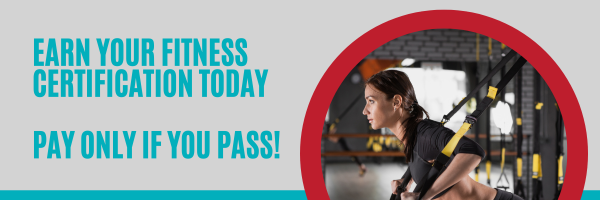Agility is a crucial component of athletic performance, allowing individuals to change direction, speed, and body position quickly and efficiently. It is essential for success in various sports, such as basketball, soccer, football, and tennis, and can also enhance daily functional capabilities. By incorporating agility training into your workout routine, you can develop the skills necessary for quick and nimble movement, improving your overall athleticism and performance. In this blog post, we will discuss the benefits of agility training, provide examples of agility exercises and drills, and offer tips for incorporating agility training into your workout routine.
Agility training offers numerous physical and mental benefits, including
- Improved Athletic Performance: Enhanced agility allows athletes to move more quickly and efficiently on the field or court, improving overall performance and competitiveness.
- Increased Coordination and Balance: Agility training requires coordination between the upper and lower body, as well as the ability to maintain balance during rapid changes in direction and speed.
- Enhanced Body Awareness: Agility training promotes greater body awareness and control, allowing individuals to make more precise and effective movements.
- Injury Prevention: Improved agility and body control can help reduce the risk of injury by enabling individuals to make quick, controlled movements in response to changing conditions or unexpected obstacles.
- Mental Sharpness: Agility training requires quick decision-making and mental focus, helping to develop cognitive skills that can enhance overall mental sharpness and performance.
Agility Exercises and Drills
The following agility exercises and drills can be incorporated into your workout routine to develop quick and nimble movement skills:
Ladder Drills: Agility ladder drills are a staple of many agility training programs, providing an opportunity to practice quick footwork, coordination, and body control. Examples of ladder drills include:
In-and-out: Step in and out of each ladder square with both feet, moving laterally down the ladder.
Ickey shuffle: Step into the ladder square with one foot, follow with the other foot, then step out of the ladder with the first foot, moving laterally down the ladder.
Lateral high knees: Perform high knees while moving laterally down the ladder, ensuring that both feet touch each square.
Cone Drills: Cone drills are another popular method for developing agility, requiring rapid changes in direction and speed. Examples of cone drills include:T-drill: Set up four cones in a T shape, sprint forward to the middle cone, shuffle laterally to one side, shuffle across to the opposite side, and then shuffle back to the middle before backpedaling to the starting position.
Zig-zag drill: Set up a series of cones in a zig-zag pattern and weave in and out of the cones, focusing on maintaining control and speed during the changes in direction.
Plyometric Exercises
Plyometric exercises, which involve explosive movements and rapid changes in body position, can also be effective for developing agility. Examples of plyometric exercises for agility include:
Box jumps: Jump onto a box or platform with both feet, focusing on landing softly and maintaining balance.
Skater jumps: Perform lateral jumps from one foot to the other, simulating the movement of a speed skater.
Depth jumps: Step off a box or platform, land softly on both feet, and immediately jump vertically or horizontally, focusing on minimizing ground contact time.
Tips for Incorporating Agility Training into Your Workout Routine
To effectively incorporate agility training into your workout routine, consider the following tips:
Warm-up Properly
Begin your agility training sessions with a dynamic warm-up to prepare your muscles and joints for the demands of the exercises and drills. Examples of dynamic warm-up exercises include light jogging, high knees, butt kicks, and dynamic stretching.
Focus on Technique
When performing agility exercises and drills, prioritize proper technique and body control over speed. As your proficiency and confidence in the movements improve, gradually increase the speed at which you perform the drills.
Incorporate Sport-Specific Movements
If you are training for a specific sport, incorporate sport-specific movements and scenarios into your agility training. For example, soccer players may practice changing direction while dribbling a ball, while basketball players may work on defensive shuffles or cutting movements.
Vary Your Training
To prevent boredom and promote continued progress, vary your agility training routine by incorporating different exercises and drills. Consider using different types of equipment, such as agility hurdles or resistance bands, to further challenge your body and develop your agility skills.
Train Multiple Components of Agility
Agility training should address various components, including change of direction, acceleration, deceleration, and reactive ability. Ensure that your agility training program includes exercises and drills that target each of these components.
Include Plyometric Exercises
As mentioned earlier, plyometric exercises can be beneficial for improving agility. Incorporate plyometric exercises into your agility training program to develop explosive power and quickness.
Allow for Adequate Recovery
Agility training can be physically demanding, so it's essential to allow for adequate recovery between training sessions. Incorporate rest days into your workout routine, and consider using activities such as foam rolling or yoga to promote muscle recovery and flexibility.
Additional Considerations for Effective Agility Training
To maximize the benefits of your agility training program, keep the following considerations in mind:
Train on Various Surfaces
Practicing agility exercises and drills on different surfaces, such as grass, turf, or sand, can help to develop a more versatile and adaptable skill set.
Develop Strength and Flexibility
In addition to agility training, it's essential to develop a strong and flexible foundation through regular strength training and flexibility exercises. A well-rounded fitness routine that includes these components can enhance your overall agility and athletic performance.
Monitor Your Progress
Track your progress over time by setting specific goals and periodically assessing your performance in agility exercises and drills. This can help to maintain motivation and ensure that you continue to challenge yourself and improve.
Work with a Professional
If you're unsure about proper technique or progression, consider working with a certified personal trainer or sports performance coach who specializes in agility training. They can provide guidance, support, and feedback to help you achieve your agility goals.
Conclusion
Agility training is an essential component of athletic performance and overall fitness, offering numerous benefits, including improved coordination, balance, body awareness, injury prevention, and mental sharpness. By incorporating agility exercises and drills into your workout routine and following the tips and considerations outlined in this blog post, you can develop the skills necessary for quick and nimble movement and enhance your overall athleticism and performance. With dedication, consistency, and proper technique, you can achieve success with your agility training program and enjoy the many rewards that come with improved agility and athletic ability.





